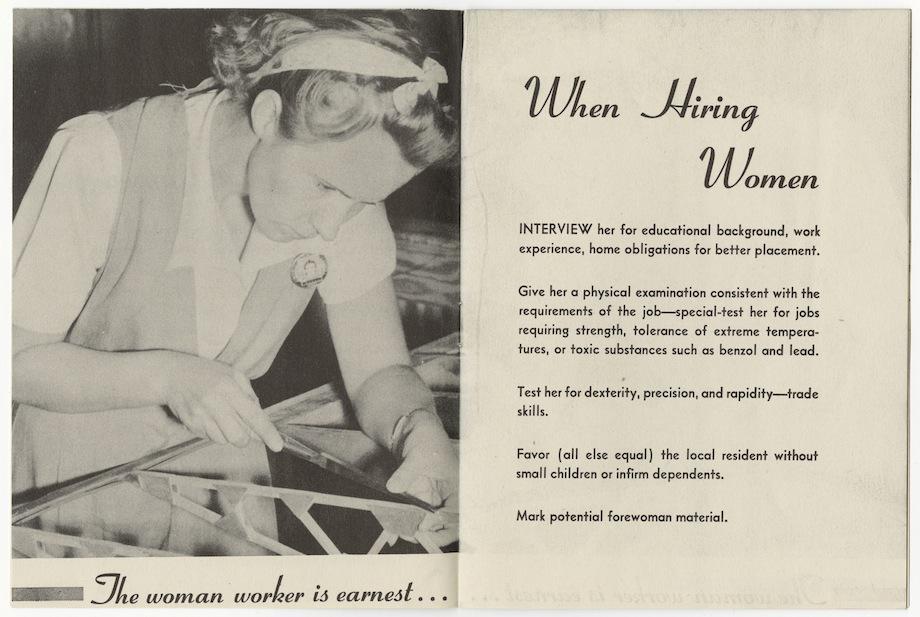The Vault is Slate’s history blog. Like us on Facebook, follow us on Twitter @slatevault, and find us on Tumblr. Find out more about what this space is all about here.
The title of this pamphlet, distributed by the War Department in 1943, could be read as a celebration or a command. Industrial foremen were told “You’re Going to Employ Women,” whether they liked it or not; the war effort demanded it. The pamphlet was meant to help them come to terms with the idea. (You can see the full document here, in PDF form.)
“A woman worker is not a man,” the anonymous author concedes. “She is a substitute—like plastics instead of metal—she has special characteristics that lend themselves to new and sometimes much superior uses.” “Industrially inexperienced” women made up for their unfamiliarity with the procedures and demands of factory work with their “desire to help win the war—to shorten it by even a minute.”
Women were “adaptable,” “dexterous.” Their presumed former occupations as housewives made them “good at repetitive tasks” and “fine color and material observants.” The idea that women were naturally adept at repetition and nimble of hand was conventional wisdom by this time, having been the justification for hiring women as secretaries or in textile factories. (Whether the idea holds any actual truth is debatable.)
People in hiring positions, the pamphlet advised, should ask women whether they had small children or “infirm dependents,” and hire locally when possible. Although World War II saw an expansion of child care options, sponsored both federally and by some individual employers, this pamphlet makes it clear that the government preferred not to see mothers using these resources, if at all possible.
This booklet [PDF] is part of the National Archives’ new permanent exhibition, Records of Rights, which will open in November—shutdown willing—in NARA’s new David M. Rubenstein Gallery.

“You’re Going To Employ Women.” Pamphlet from the War Department, 1943. National Archives and Records Administration.